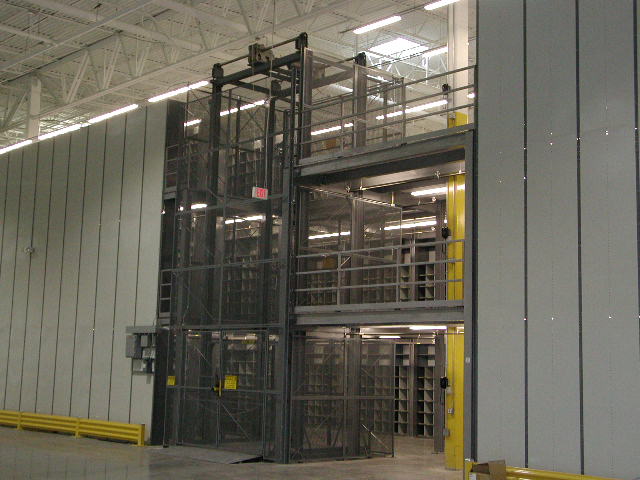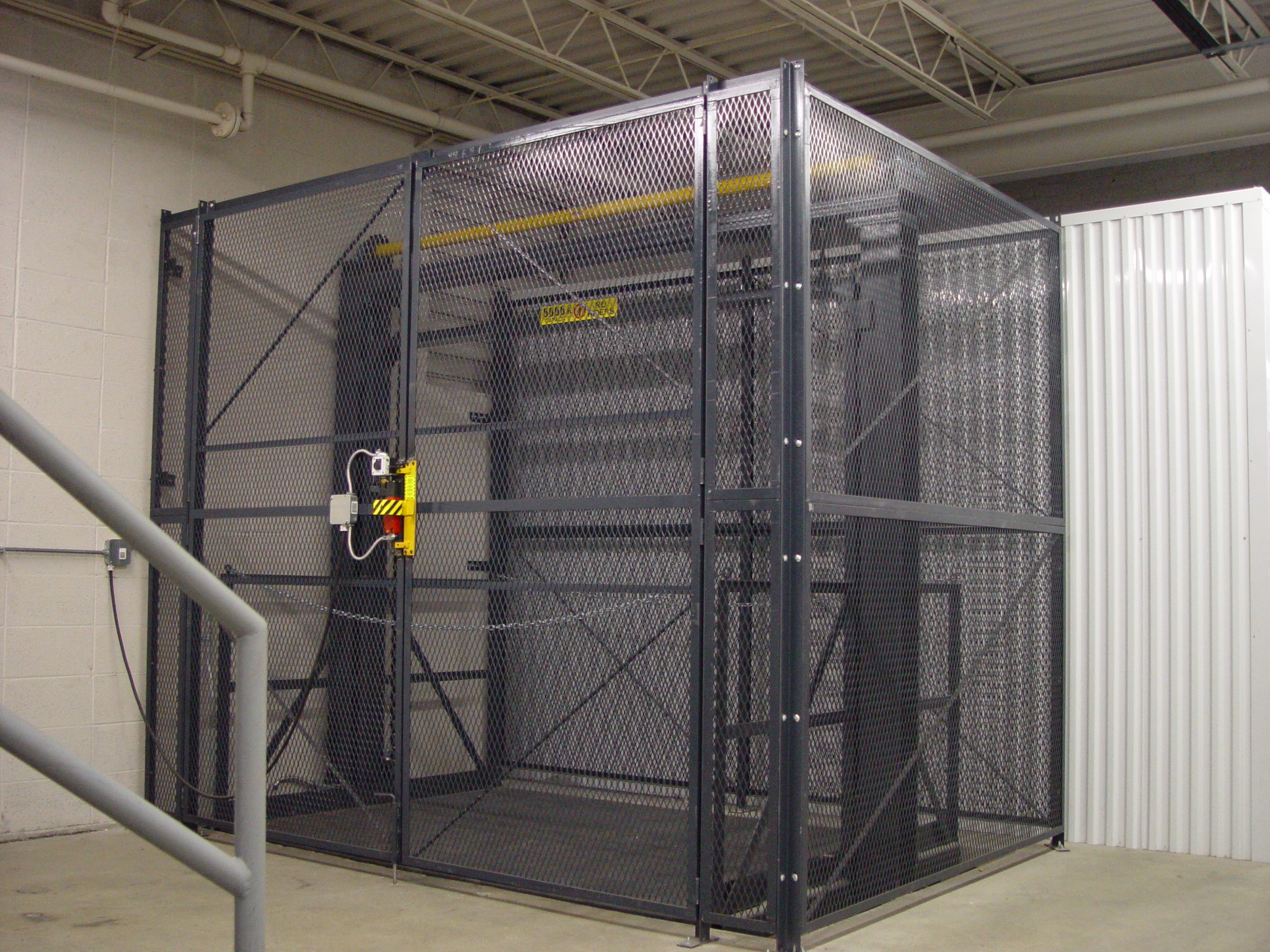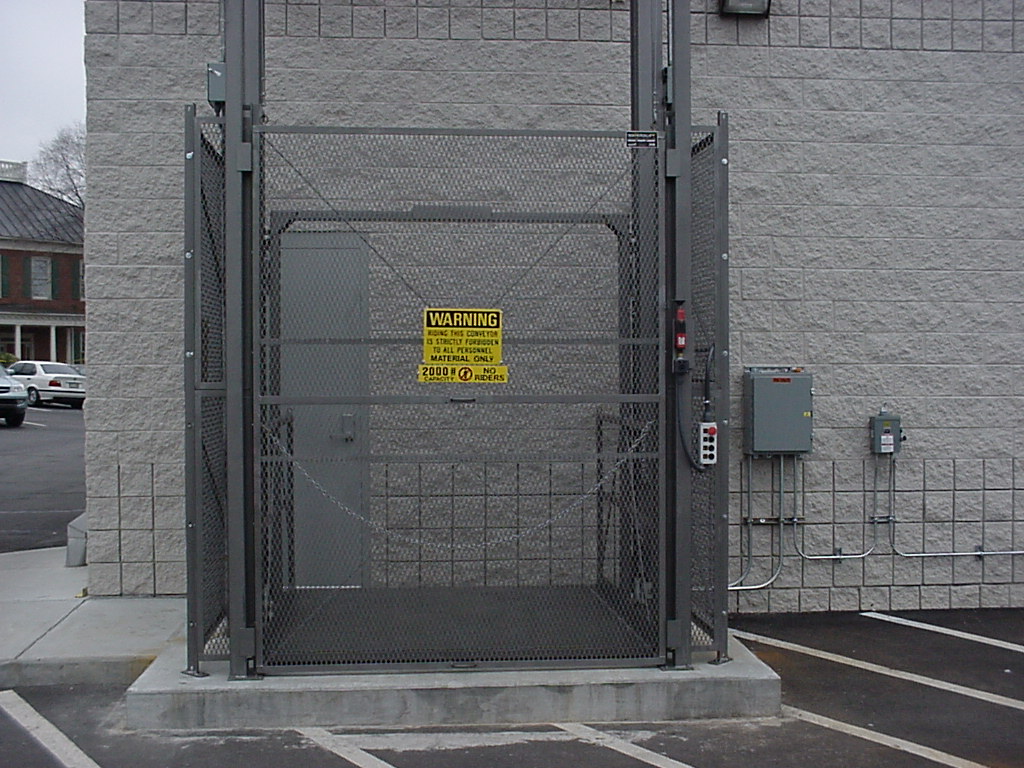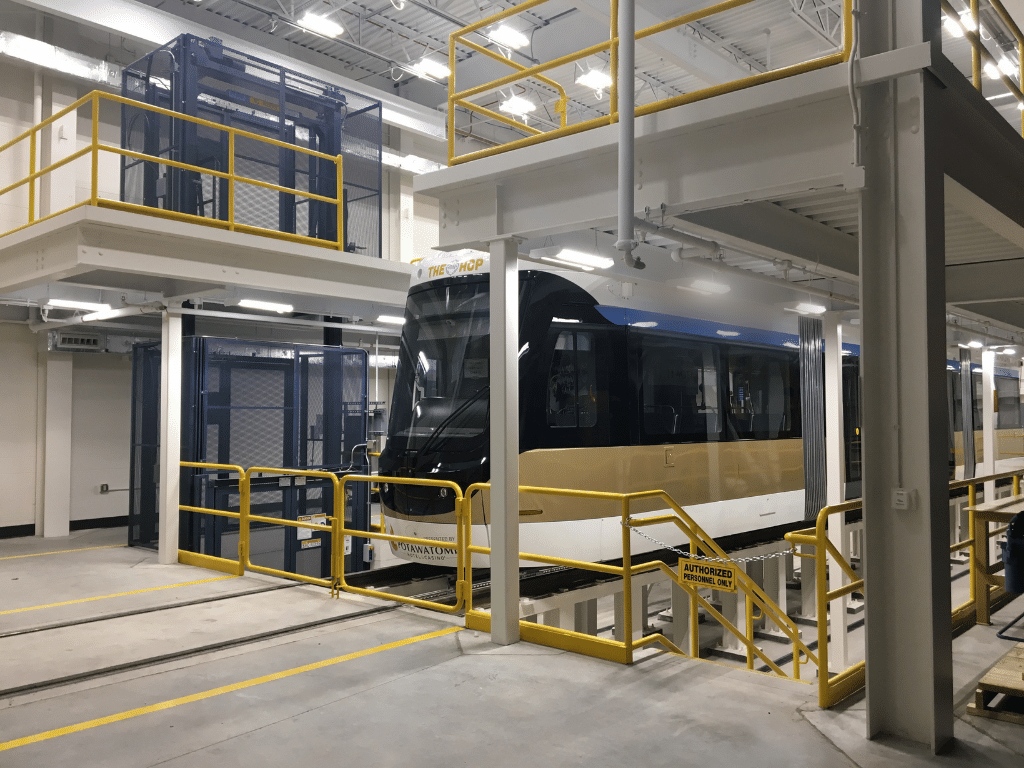Material Lifts
Material lifts, also known as Vertical Reciprocating Conveyors (VRCs), are mechanical devices designed to move materials vertically between different levels of a building or facility. They are commonly used in industrial settings and warehouses to safely transport heavy or bulky items such as pallets, crates, or equipment.
Material Lift Types
-
- Rideable
- Vertical Reciprocating Conveyor (VRC)
Material Lifts
Material lifts, also known as Vertical Reciprocating Conveyors (VRCs), are mechanical devices designed to move materials vertically between different levels of a building or facility. They are commonly used in industrial settings and warehouses to safely transport heavy or bulky items such as pallets, crates, or equipment.
Material Lift Types
-
- Rideable
- Vertical Reciprocating Conveyor (VRC)
Material Lift Applications
Freight Lifts
Designed for heavy-duty lifting of large and bulky items, such as pallets, machinery, and equipment. They can have high weight capacities and are commonly used in industrial environments.
Mezzanine Lifts
Specifically designed for transporting goods between different levels of mezzanine floors, allowing efficient utilization of vertical space.
Package Lifts
Used for transporting smaller packages or parcels between floors, often found in retail, hospitality, and commercial settings.
Dumbwaiters
Smaller VRCs designed for transporting goods such as food, dishes, or documents between different levels in restaurants, hotels, offices, or residences.
Material VRCs with Caged Enclosures
These lifts have enclosed cages or gates, enhancing safety and security during material transportation.
Vertical Pallet Lifts
Specifically designed for lifting and transporting palletized goods between different levels, often used in warehouses and distribution centers.
Continuous Vertical Conveyors
These are automated systems that continuously move materials between levels, enabling a steady flow of goods in manufacturing and distribution processes.
Vehicle Lifts
These lifts are designed to move vehicles such as motorcycles, ATV/UTVs, automobiles, trucks, and buses between levels.
Fully Automated Transfer Lifts
These lifts utilize a conveyor platform and integrate conveyorized product between levels.
Elevator Replacements
These lifts can replace obsolete freight elevators in older factories and residential buildings.
Industries That Utilize Material Lifts
Manufacturing
Distribution
Warehousing
Medical
Automotive Manufacturing
Production
Injection Molding
Retail
Government/Military
Dealership parts rooms
E-commerce
Fulfillment Centers
Pharmaceutical
Schools/Universities
Apartments/Condos
Property Management
Food Processing
Material Lift Features
-
- Customizable Design
- Diverse Load Handling
- Remote Control and Automation
- Space Efficiency
Material Lift Benefits
Enhanced Safety
VRCs improve workplace safety by reducing the risk of injuries associated with manual lifting, carrying, and climbing stairs, ensuring a safer environment for employees.
Decreased Forklift Traffic
Allows the use of pallet jacks or carts in lieu of fork trucks, decreasing the chances of fork truck accidents.
Increased Productivity
VRCs streamline material handling processes by eliminating the need for manual lifting and carrying, leading to faster and more efficient transportation of goods.
Cost Savings
By reducing labor costs, improving operational efficiency, and optimizing storage space, VRCs can contribute to significant cost savings over time.
Flexibility and Versatility
VRCs can be adapted to various layouts and environments, accommodating changes in workflow and production needs.
Reduced Material Damage
VRCs facilitate smoother material movement, minimizing the potential for damage to goods during transportation.
Space Optimization
VRCs enable efficient utilization of vertical space, allowing businesses to expand their storage capacity without needing to acquire additional floor space.
Improved Workflow
With VRCs in place, materials can be transported seamlessly between different levels, reducing congestion and bottlenecks in production or storage areas.
Adaptation to Building Constraints
VRCs are versatile solutions that can be installed in existing structures, making them suitable for buildings where traditional elevators or conveyors may not be feasible.
ROI and Longevity
The investment in VRCs can yield a favorable return on investment (ROI) due to increased efficiency, reduced labor costs, and improved material handling processes.
Material Lift FAQs
Can VRCs accommodate riders?
Yes, there is a specific type of VRC that allows one rider to occupy the platform with the load between levels.
What is the weight limit on a VRC?
VRCs are custom designed solutions to fit each individual application.
Can a VRC be used as an ADA lift?
No, VRCs do not have the proper controls and certification specifications to accommodate ADA transport.
How many levels can a VRC access?
A mechanical-type lift can access an unlimited number of stops.
Is a ramp required to roll product onto the platform?
No, the platform can be recessed into a pit that is cast or cut into the floor for a smooth, level transition onto the carriage.
What type of safety enclosures are required?
A VRC must be enclosed by either a shaft way or an expanded metal enclosure.
What type of gates are available?
Hinged doors, vertical gates, roll up doors or existing building doors.
Other Solutions
EMPLOYEE PRODUCTIVITY & WELL BEING
SPACE UTILIZATION & STORAGE
MATERIAL MOVEMENT
Site by tiny blue orange.




